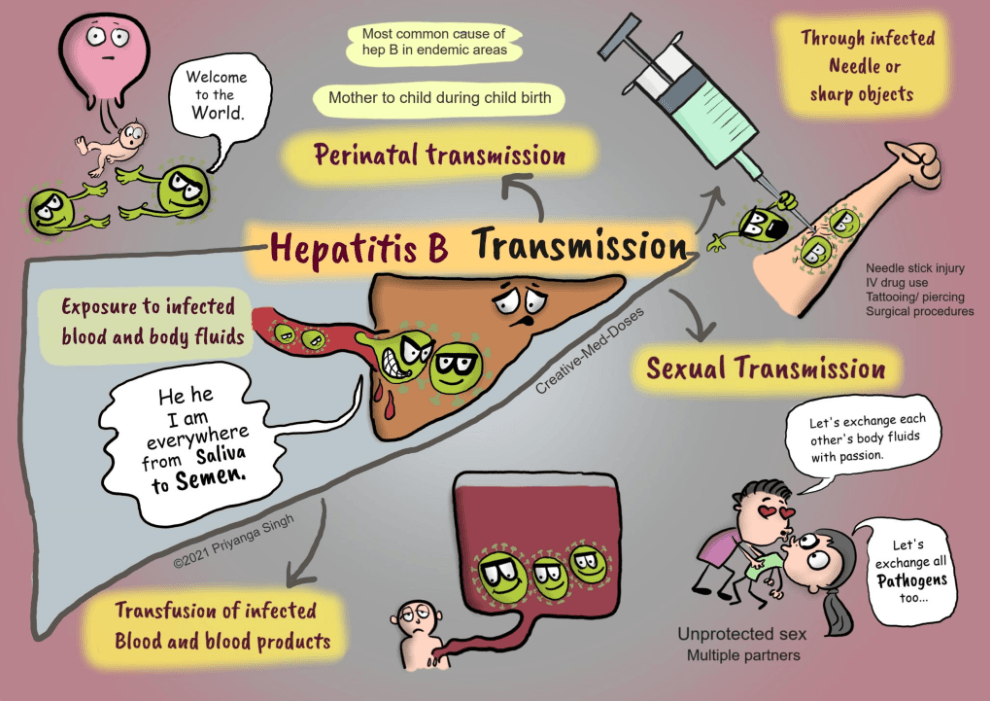World Hepatitis Day: A Call to Action for Better Health
DA
World Hepatitis Day: A Call to Action for Better Health
Hepatitis is a major health concern that affects millions globally. According to the World Health Organization (WHO), around 1.3 million people die each year from viral hepatitis, making it the second deadliest infectious disease after tuberculosis. Despite improvements in diagnosis and treatment, the number of deaths continues to rise, with approximately 3,500 people dying daily. In 2022, an estimated 254 million people lived with hepatitis B (HBV), and 50 million with hepatitis C (HCV). There were about 2.2 million new hepatitis infections that year, including 1.2 million new HBV cases and nearly 1 million new HCV cases. Notably, half of the chronic HBV and HCV cases are in people aged 30-54, and 12% are in children under 18. Men account for 58% of all cases.
The Impact of Hepatitis in India
India faces a significant burden from viral hepatitis, especially Hepatitis B and C. Approximately 40 million people in India are chronically infected with Hepatitis B, and 6 to 12 million with Hepatitis C. In 2022, the country reported over 50,000 new Hepatitis B cases and 140,000 new Hepatitis C cases, resulting in 123,000 deaths from these infections. Diagnosis rates remain low, with only 2.4% of Hepatitis B cases and 28% of Hepatitis C cases diagnosed (WHO’s Global Hepatitis Report 2024).
Efforts to combat hepatitis in India are ongoing. The National Viral Hepatitis Control Program (NVHCP), launched in 2018, aims to eliminate Hepatitis C by 2030 and significantly reduce the burden of Hepatitis A, B, and E (National Viral Hepatitis Control Program). However, challenges like limited program reach, inadequate access to affordable diagnostic and treatment services, and the need for broader public awareness persist.
What is Hepatitis?
Hepatitis is an inflammation of the liver with potentially severe health implications. It can be caused by viral infections, toxic substances, autoimmune diseases, and certain medications. Types of hepatitis include:
Alcoholic Hepatitis: Resulting from excessive alcohol consumption.
Autoimmune Hepatitis: Where the immune system attacks liver cells.
Drug-Induced Hepatitis: Caused by specific medications or toxic substances.
Viral Hepatitis: Caused by Hepatitis Virus A, B, C, D, E.
Understanding the causes of hepatitis is crucial for effective prevention and treatment.
Types of Viral Hepatitis

There are five main types of viral hepatitis, each caused by a different virus and having distinct transmission routes, symptoms, and treatments:
Hepatitis A (HAV): Spread by feco-oral transmission mainly and through contaminated food or water or close contact with an infected person. Symptoms include fever, fatigue, loss of appetite, nausea, abdominal pain, dark urine, and jaundice. Prevention includes vaccination, good sanitation, and hygiene practices. There is no specific treatment, but it usually resolves on its own with supportive care.
Hepatitis B (HBV): Transmitted through contact with infectious body fluids, such as blood, semen, and vaginal fluids. Symptoms include fever, fatigue, loss of appetite, nausea, abdominal pain, dark urine, and jaundice. Chronic infection can lead to liver cirrhosis or cancer. Prevention includes vaccination, safe sex practices, and avoiding needle sharing. Chronic Hepatitis B can be treated with antiviral medications.

Hepatitis C (HCV): Mainly spread through blood-to-blood contact, such as sharing needles or unscreened blood transfusions. Early stages are often asymptomatic, but chronic infection can lead to liver cirrhosis or cancer. There is no vaccine, so prevention focuses on avoiding needle sharing and ensuring blood products are screened. Most cases of Hepatitis C can be cured with antiviral medications.
Hepatitis D (HDV): Requires the presence of Hepatitis B virus to replicate and is spread through contact with infectious blood. Symptoms are similar to those of Hepatitis B, but co-infection can lead to more severe disease. HBV vaccination can prevent HDV infection, and treatment involves antiviral medications and managing Hepatitis B infection.
Hepatitis E (HEV): Spread primarily through contaminated water or food. Symptoms include fever, fatigue, loss of appetite, nausea, abdominal pain, dark urine, and jaundice, and it can be severe in pregnant women. Prevention includes good sanitation and hygiene practices, and a vaccine is available in some countries. Hepatitis E is usually self-limiting, with supportive care being the primary treatment.

Taking Action
World Hepatitis Day, observed on July 28th each year, is an opportunity to raise awareness about hepatitis and encourage action to combat this global health crisis. Governments, health organizations, and individuals must work together to improve diagnosis, expand access to treatment, and enhance prevention efforts. By increasing awareness and taking proactive steps, we can make significant strides toward eliminating hepatitis and improving global health outcomes.
Key Takeaways
Get Vaccinated: Vaccines are available for Hepatitis A and B.
Practice Good Hygiene: Wash hands thoroughly and ensure safe food and water consumption.
Safe Practices: Avoid sharing needles and practice safe sex.
Support Efforts: Participate in community awareness programs and support local health initiatives.

Remember, knowledge and prevention are key. By working together, we can make a difference in the fight against hepatitis and contribute to a healthier future for all.
